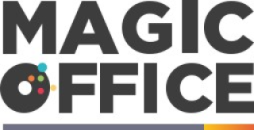
Understanding the Importance of an Organized Filing Cabinet
Recognizing the Value in a Tidy File Cabinet
A well-organized filing cabinet is more than just a convenience—it's a cornerstone of efficiency within the office space. Over the years, many have witnessed the chaotic aftermath of disorganized files that pile up without a proper system in place. This disarray can lead to wasted time and heightened stress levels, generated by the frantic search for misplaced documents or files. The benefits of a structured approach to organizing files reach beyond mere aesthetics in the office environment. Efficient organization using filing cabinets maximizes cabinet space and ensures that all essential documents are easily accessible to those who need them. Fostering a systematic approach to filing, whether in lateral or vertical file cabinets, streamlines the searching process, reducing the time spent looking for crucial papers. Incorporating hanging files or utilizing color coding within a file system can drastically improve document retrieval times. It's a practice that offers the added benefit of visually appealing organization, reducing the time it takes to locate a specific document when needed. Proper cabinet organization minimizes clutter, making it easier to maintain neat drawer spaces and preventing full file cabinets from becoming a source of frustration. Furthermore, having a well-thought-out filling system represents a paradigm of professionalism in a company. It shows potential clients and employees alike that the business is reliable, precise, and efficient in its operations. Strategically implemented file cabinet solutions provide a comprehensive tool for optimizing storage space, keeping the files organized, and ultimately enhancing the efficiency and productivity of the office. For tips on enhancing efficiency through effective filing practices, visiting our blog can offer more insights and detailed practices to cultivate a stress-free and highly organized workplace.Assessing Current Filing Practices
Evaluating Your Current File Management
Before embarking on a journey to optimize your filing system, it's important to assess the current state of your filing practices. This process involves identifying any inefficiencies in your present setup and pinpointing areas for improvement. The first step is to take an inventory of the existing filing cabinets and storage systems. Pay attention to how the cabinet space is utilized, paying particular mind to how drawers are organized and if your file folders are too crammed or disorganised.
Look for any obsolete documents taking up valuable space. Determine whether the stress-free operation of your office is hindered by outdated files affecting efficient cabinet organization. Modern offices sometimes suffer from outdated systems that haven't evolved in years. It's time to reflect whether this is applicable to your situation. Ask yourself if your current filing cabinets possess the ability to hold hanging files properly, especially if you want to ensure a productive work environment.
Another point to consider is the color coding system currently in place. Are you utilizing color-coded folders and labels to enhance your file organization? This system can transform the way you approach organizing files. By simplifying file retrieval, it can prevent wasted time and frustration.
Analyzing your present methods and identifying the gaps can set the foundation for implementing a more efficient filing structure. This preparatory phase ensures you are ready to transition into a more organized office environment and effectively fill your cabinets with only the necessary files going forward.
Implementing a Categorized Filing System
Setting Up a Robust Filing Framework
Creating an efficient filing system involves crafting a well-thought-out approach to organizing documents within your office space. The first step in this journey is to build a robust framework that will guide the filing and retrieval of important papers or digital files with ease. Whether you're dealing with physical file cabinets or digital storage, the emphasis should be on clarity and ease of use. Consider the types of materials your office typically handles. Do you have an abundance of paperwork that requires physical storage, or is most of your documentation digital? Identifying this will help in selecting the appropriate cabinets or storage solutions, be it a lateral file or a vertical file system. For physical documents, a combination of hanging files, file folders, and cabinet space categorization is essential. To maximize efficiency, think about these elements:- Categorization: Develop a clear method for categorizing files. This can be by department, client, or project, depending on what makes sense for your organization.
- Color Coding: Utilize color-coded folders to quickly differentiate between categories. This visual cue helps in reducing the time spent searching for documents.
- Accessibility: Ensure that frequently accessed files are easy to reach and organized in the top drawers of your filing cabinets. This can be particularly useful in classrooms or busy office environments.
- Space Optimization: Make efficient use of limited cabinet space by discarding obsolete documents and making room for new ones.
Utilizing Technology for Filing Efficiency
Incorporating Technology into Your Filing Practices
Leveraging technology is a vital step in enhancing the efficiency of your filing system. It can transform how you manage the space in your drawers, cabinets, and overall storage. Here's how you can utilize technology to streamline your filing process:- Digital Files: Transitioning from physical documents to digital files can significantly increase organization and save cabinet space. Scanning important documents and storing them digitally reduces the need for multiple filing cabinets.
- Cloud Storage: Utilize cloud-based services for file storage and access. This allows for easy organization of files and enables remote access to important documents, making your office environment more flexible.
- Document Management Systems: Implementing a document management system can automate the organizing, storing, and accessing of documents. These systems help keep your files organized and ensure that all file folders are easily retrievable.
- Software Solutions: Consider using software specifically designed for filing system management. These solutions often come with features like color coding, which enhances organization by classifying files into categories quickly.
Training Staff on Filing Protocols
Empowering Your Team with Filing Knowledge
Training staff on filing protocols is crucial for maintaining an organized and efficient filing system. A well-informed team can significantly reduce the time spent searching for documents and ensure that the filing cabinets remain in optimal condition. Here are some key strategies to consider:
- Conduct Regular Training Sessions: Organize workshops or training sessions to familiarize staff with the filing system. Cover topics such as the use of file folders, organizing files within drawers, and the importance of cabinet organization.
- Implement Color Coding: Introduce a color coding system to help staff quickly identify categories of documents. This can be particularly useful in a busy office or classroom environment where quick access to files is essential.
- Utilize Technology: Encourage the use of technology to enhance filing efficiency. Digital tools can complement physical filing systems, making it easier to track and retrieve documents.
- Provide Clear Guidelines: Ensure that all staff members understand the filing protocols. This includes knowing how to properly fill and label file folders, as well as how to utilize both vertical and lateral file cabinets effectively.
- Encourage Feedback: Create an open environment where staff can provide feedback on the filing system. This can lead to improvements and innovations in cabinet organization and storage solutions.
By investing time in training, you not only enhance the efficiency of your filing system but also empower your team to maintain a stress-free and organized workspace. Remember, a well-structured filing cabinet is a cornerstone of effective office management.
Regular Maintenance and Auditing of Filing Systems
Ensuring Longevity with Routine Checks
Regular maintenance of your filing system is crucial for sustaining its effectiveness over time. A well-kept system not only enhances office efficiency but also prevents the clutter that hinders productivity. Consistent audits help identify and resolve issues before they escalate into more significant problems.
Planning scheduled checks at intervals of a few months can help keep the organization intact, be it a lateral file system or vertical file storage. Spotting discrepancies or disorganized documents early, through regular audits, allows for timely interventions and adjustments.
Streamlining Operational Flow
Evaluation of the filing cabinet organization should include reviewing drawer contents for outdated or redundant documents. By doing so, you can ensure that filing cabinets are not overloaded, thus improving accessibility and ease of use. It is also recommended to check for any misplaced or mislabeled folders that could cause confusion and file retrieval delays.
To facilitate a stress-free process, keep an inventory of the files stored and update it consistently. This practice works best in both traditional file cabinet systems and digital archives, resulting in efficient use of cabinet space.
Adopting Technology for Sustainable Practices
As you execute regular maintenance, employ technology to track your filing system's performance. Integrating color coding and hanging files can add a visual dimension to your organizing efforts. Ensuring file folders are consistently labeled and stored in designated spaces can dramatically streamline your filing process, while free shipping offers on office supplies can help maintain your resources economically.
Additionally, explore digital tools that provide statistics on document usage and retrieval rates. This will guide you on where to focus your organizing efforts, allowing for targeted improvements where your filing system needs it most.
Maintaining an effective filing system entails consistent effort but rewards you with valuable organization and space management. Done correctly, routine maintenance cultivates a seamless, stress-free working environment—freeing up your time to focus on what truly matters in your office.













